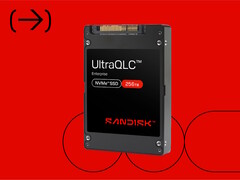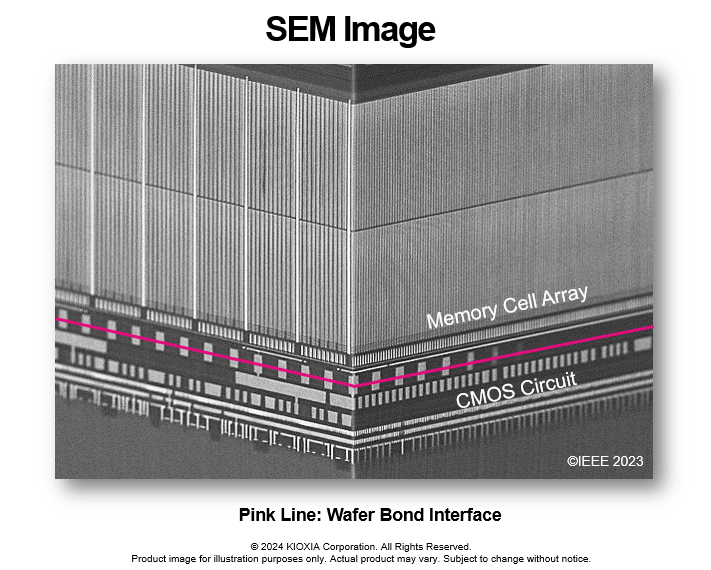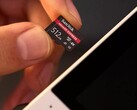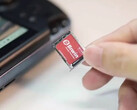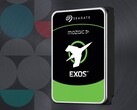Sandisk has unveiled the UltraQLC 256TB NVMe U.2 SSD for enterprise customers, including cloud providers and AI training super clusters. It will be available in early 2026.
Today, many businesses store corporate information, run virtual Windows PCs, stream videos to subscribers, and train AI using data centers and cloud storage providers. The combined worldwide storage demand has long exceeded the terabyte (TB), petabyte (1,024 TB), and even a single zettabyte (1021 bytes). At the same time, power demand has increased with the growing storage needs.
The UltraQLC SSD leverages Kioxia's eighth-generation BiCS FLASH 3D flash memory technology to lower power usage while increasing the density of information that can be stored in each drive. Versus the prior generation of BiCS FLASH memory, the latest generation increases density by 50%, write speeds by 20%, and read speeds by 10%, while decreasing write power consumption by 30%.
Modern SSD memory often uses multi-layer stacking of memory cells to increase the amount of data stored in any given space. The 8th-gen BiCS memory stacks 218 layers of memory cells together. The CMOS circuitry that controls these cells is made on a separate wafer due to heat sensitivity, then bonded to the 3D memory cell wafer using Kioxia's CMOS Directly Bonded to Array (CBA) technology.
Readers can see the company's consumer SSD products at the Sandisk store on Amazon.




